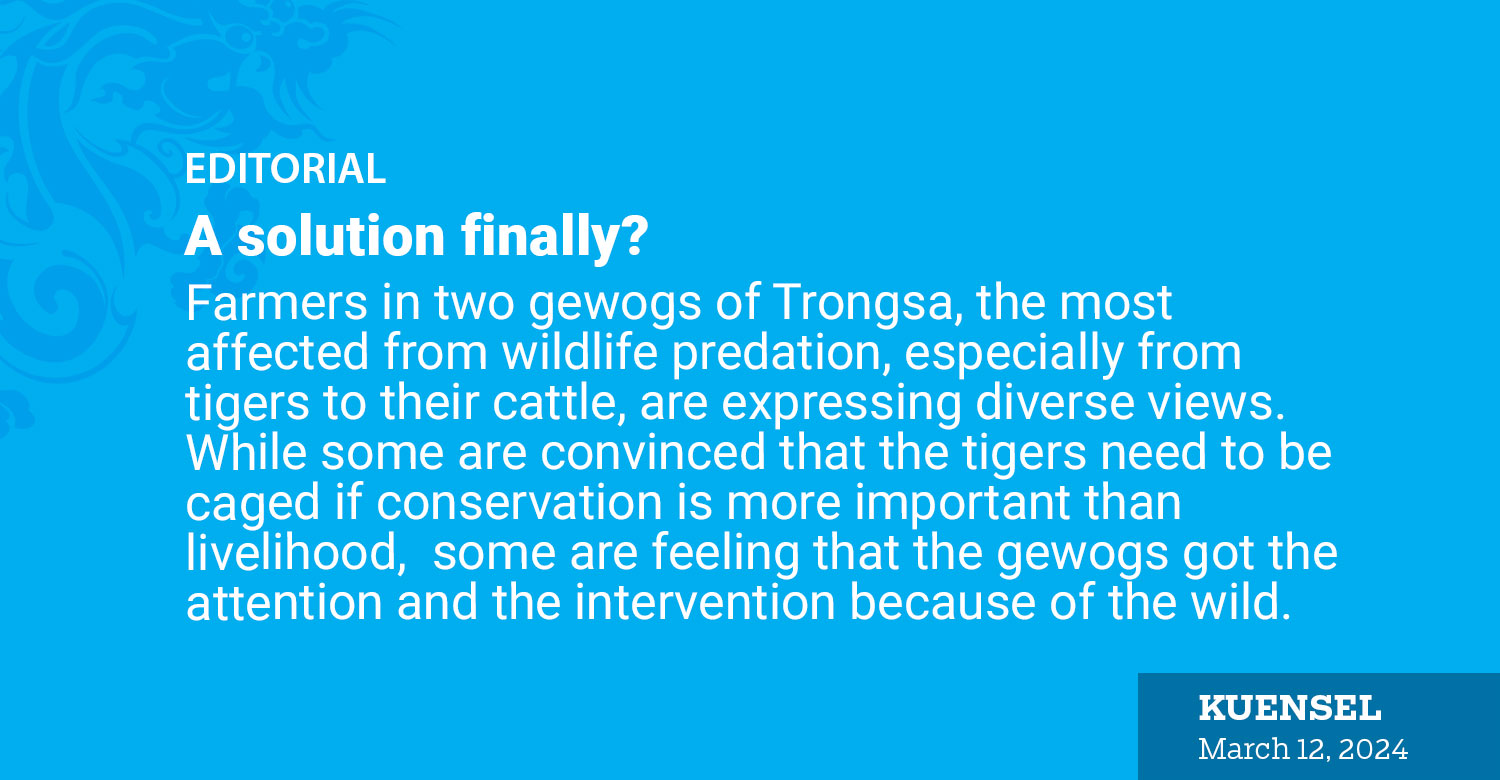Farmers in two gewogs of Trongsa, the most affected from wildlife predation, especially from tigers to their cattle, are expressing diverse views. While some are convinced that the tigers need to be caged if conservation is more important than livelihood, some are feeling that the gewogs got the attention and the intervention because of the wild.
Human-wildlife conflict is an old issue. Farmers say policies are always on the wild side, leaving rural communities to bear the brunt of crop loss and domestic animal predation.
However, recent interventions by the government are signalling a shift in this narrative. The introduction of chain-link fencing is proving to be a game-changer in mitigating human-wildlife conflict. Beyond merely keeping tigers at bay, these fences are creating secure pastures where cattle can graze safely, allowing farmers to focus on their agricultural pursuits without constant fear of wildlife intrusion.
This initiative is more than just a solution to crop loss. It presents hope for rural communities. The threat of wildlife predation has been driving villagers to urban areas in search of livelihood opportunities, leaving behind barren fields and empty households. The implementation of chain-link fencing is not just about protecting farms, it’s about stemming the tide of rural-urban migration and revitalising the agricultural backbone of our nation.
The numbers are there as evidence. The impact is noticeable in dzongkhags that are covered with the initiative. The significant financial backing from the government further underscores the commitment to this cause, with substantial allocations in recent budgets earmarked for fencing projects and agricultural support.
The imperative for food self-sufficiency becomes even more pressing as we have already graduated to a mid-level income country. We can no longer afford to lament the challenges of a least developed country and must proactively address them. Protecting our farms and farmers should not be compromised, not just for economic stability but for the preservation of our cultural heritage and rural way of life.
Some may argue about the costs involved, but let’s be pragmatic. The investment required for chain-link fencing pales in comparison to the long-term benefits it offers. By safeguarding our most fertile and wildlife-sensitive areas, we are not just protecting crops, we are safeguarding our future.
The success of chain-link fencing in some dzongkhags represents a pivotal moment in our conservation efforts. It’s a testament to what can be achieved with committed government’s intervention. If a simple solution like a chain-link fencing represents a pivotal moment in Bhutan’s conservation efforts, we must invest in it.
There is hope. The past government initiated it and the present government sees it as a priority. If we are serious about food self-sufficiency, we need to protect our farms and farmers. The plan is there. Nu 386 million has been earmarked for chain-link fencing covering a substantial distance of 2,697 kilometres. The focus is clear – to safeguard commodities such as rice, maize, wheat, and high-value agricultural products.
If we can, for instance, prevent the annual loss of maize and paddy worth USD 4-5 million due to wildlife, we are on the right track. It would also help the agriculture sector, which employs, 43.5 percent of the population but only contributes about 15 percent to improve contribution to the economy.


